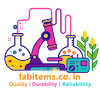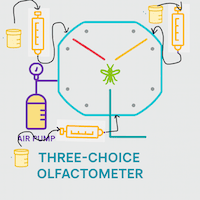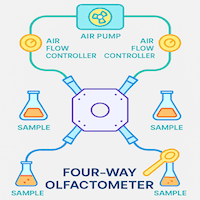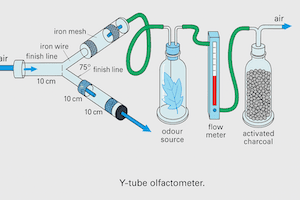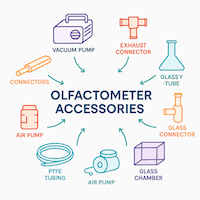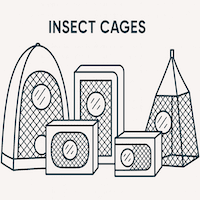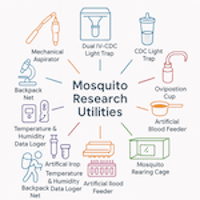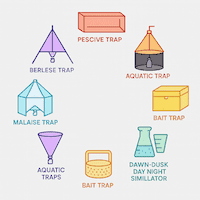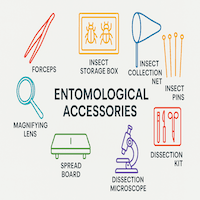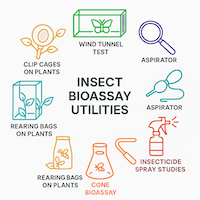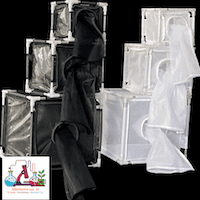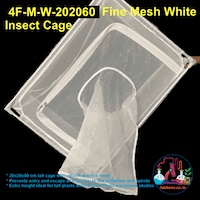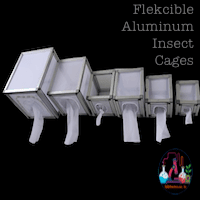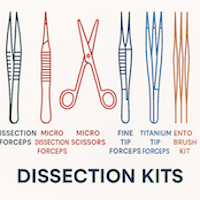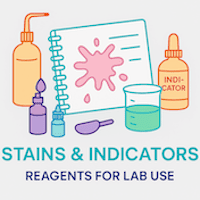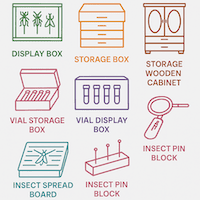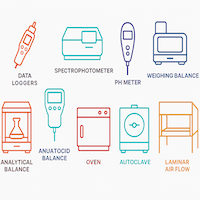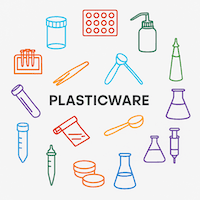Technical information for chloroform
CAS Number: 67-66-3
Chemical Formula: CHCl3
Carcinogenicity (EPA): B2 – Probable human carcinogen.
MCL (Drinking Water): 0.07 mg/L (Maximum Contaminant Level Goal (MCLG) - The level of a contaminant in drinking water below which there is no known or expected risk to health.)
OSHA Standards: 50 ppm (9.78 mg/m3) (ceiling limit not to be exceeded at any time) NIOSH Standards: 2 ppm (9.78 mg/m3). (limited to 60-minute exposure)
ACGIH: 10 ppm, 8 hr Time Weighted Avg (TWA)
There are several other names exist for Chloroform:
Trichloromethane: This name indicates that chloroform consists of three chlorine (trichloro-) atoms bonded to a single carbon (methane) atom. Its chemical formula is CHCl₃.
Methane trichloride: Similar to trichloromethane, this name also suggests the presence of three chlorine (trichloride) atoms bonded to a methane (carbon) group. Its chemical formula is also CHCl₃.
Formyl trichloride: This name implies the presence of a formyl group (HCO-) combined with three chlorine (trichloride) atoms. Its chemical formula is CHCl₃.
Methyl trichloride: This name suggests that chloroform is derived from a methyl group (CH₃-) combined with three chlorine (trichloride) atoms. Its chemical formula is also CHCl₃.
Trichloroform: This name simply indicates the presence of three chlorine (trichloro-) atoms in the compound. Its chemical formula is CHCl₃.
What is Chloroform?
Chloroform is a colorless liquid with a slightly sweet smell. It's a man-made chemical formed during water disinfection using chlorine and is also used in some industrial processes.
Where Might You Encounter Chloroform?
Most people encounter very low levels of chloroform in everyday life. Trace amounts can be found in:
- Air: Particularly in areas with heavy chlorine use for water treatment or swimming pools. Particularly in areas with heavy chlorine use for water treatment or swimming pools.
- Drinking Water: In very small quantities. In very small quantities.
- Food: Minute traces can be present in some foods. Minute traces can be present in some foods.
Important! Chloroform is not used in medicine anymore due to its health risks.
How Can Chloroform Exposure Happen?
While unlikely in everyday life, exposure can occur through:
- Breathing high levels in industrial settings: This can cause dizziness, fatigue, and in extreme cases, harm organs like the liver and kidneys. This can cause dizziness, fatigue, and in extreme cases, harm organs like the liver and kidneys.
- Skin contact: This may cause irritation. This may cause irritation.
Safety First!
Here's how to handle potential chloroform exposure safely:
- Minimize exposure: If you suspect high levels of chloroform in your workplace, talk to your employer about safety protocols and ventilation. If you suspect high levels of chloroform in your workplace, talk to your employer about safety protocols and ventilation.
- Leave the area: If you experience dizziness or irritation while using products containing chloroform (rare), move to fresh air immediately. If you experience dizziness or irritation while using products containing chloroform (rare), move to fresh air immediately.
- Seek medical attention: If you suspect high exposure or experience concerning symptoms, seek medical help right away. If you suspect high exposure or experience concerning symptoms, seek medical help right away.
Remember: The information provided in this brochure is for general awareness only. Always follow safety instructions on product labels and consult a doctor if you have any concerns. The information provided in this brochure is for general awareness only. Always follow safety instructions on product labels and consult a doctor if you have any concerns.
This document discusses potential historical and industrial uses of chloroform. The information presented here is compiled from various online sources, and its complete accuracy cannot be guaranteed. It's crucial to verify the information with reputable scientific or industrial sources before attempting any use of chloroform. Chloroform is a hazardous chemical, and improper handling can be life-threatening.
Potential Use Cases of Chloroform (Verification Required):
- Historical Anesthetic (Mid-1800s): Chloroform was once widely used as a surgical anesthetic due to its ability to induce unconsciousness. However, its unpredictable effects and potential health risks led to the development of safer alternatives.
- Industrial Solvent: Chloroform was historically used as a solvent in various industries due to its ability to dissolve fats, oils, and resins. Its use in this role has likely diminished due to the availability of safer alternatives.
- Refrigerant Production: Chloroform may have been used historically in the production of fluorocarbon-22, a refrigerant (coolant). Modern refrigerants typically use less hazardous chemicals.
- Fumigant (Discouraged): Some historical accounts suggest chloroform was used as a fumigant to control insects, especially bed bugs. Its toxicity and flammability make it a highly dangerous method not recommended for any use.
- Embalming (Victorian Era): There are limited references to chloroform being used in Victorian embalming practices, potentially for temporary body preservation or plumping sunken features. This practice, if true, was likely ineffective and hazardous.
Important Note:
- Modern medicine and industry have largely replaced chloroform with safer alternatives due to its health risks.
- Do not attempt to use chloroform for any purpose without proper training, safety equipment, and a thorough understanding of its dangers.
Additional Resources:
- Consult with qualified professionals in scientific or industrial fields before attempting any use of chloroform.
- Reputable government or scientific websites may offer more accurate and up-to-date information on Chloroform.
Remember: Safety is paramount. Always handle chloroform with extreme caution and prioritize using safer alternatives whenever possible.
Applications of Chloroform in Biotechnology and Molecular Biology:
DNA Extraction: Chloroform was often used in DNA extraction protocols to separate DNA from proteins and other cellular components. It acted as a solvent to dissolve lipids and proteins, allowing for the isolation of pure DNA.
Protein Denaturation: Chloroform could be used to denature proteins, disrupting their native structure and function. This property was utilized in protein purification procedures to solubilize and denature proteins for further analysis.
Solvent for Reagents: Chloroform was used as a solvent for various reagents and chemicals in molecular biology experiments, including certain dyes and stains used in gel electrophoresis and chromatography.
Chloroform, historically, had various applications in biology beyond biotechnology and molecular biology:
Anesthesia: Before its safety concerns became widely known, chloroform was commonly used as an anesthetic in medical procedures, including surgeries. It was administered to induce a state of unconsciousness in patients undergoing surgical interventions.
Parasitology: Chloroform was used in parasitology to immobilize and preserve specimens for microscopic examination. It was particularly useful for studying live parasites, such as protozoa and helminths, by temporarily immobilizing them for observation under a microscope.
Histology: Chloroform was employed in histological techniques to prepare tissue samples for microscopic examination. It acted as a clearing agent, facilitating the removal of excess staining agents and enhancing the visibility of cellular structures in tissue sections.
Preservation: Chloroform was utilized as a preservative for biological specimens, such as plant and animal tissues. By immersing specimens in chloroform, researchers could prevent decomposition and maintain the integrity of the samples over extended periods.
Entomology: Chloroform was occasionally used in entomology to immobilize insects for taxonomic studies and specimen preparation. It provided a rapid and effective method for temporarily immobilizing live insects without causing significant damage to their bodies.
Isoamyl alcohol: Often used as an alternative to chloroform in DNA extraction protocols, isoamyl alcohol efficiently separates DNA from proteins and other cellular components.
Phenol-chloroform: A mixture of phenol and chloroform, phenol-chloroform is commonly employed in DNA and RNA extraction procedures as a solvent for separating nucleic acids from proteins and lipids. However, it is important to handle phenol with caution due to its corrosive and toxic nature.
Organic solvents: Ethanol and isopropanol are frequently used as alternatives to chloroform for precipitating nucleic acids during DNA extraction. These solvents effectively precipitate DNA while being less hazardous to handle.
Commercial DNA extraction kits: Many commercially available DNA extraction kits utilize alternative solvents and methods that eliminate the need for chloroform. These kits provide convenient and safe options for isolating DNA from various sample types.
Automated extraction systems: Automated DNA extraction systems utilize proprietary reagents and methods to extract nucleic acids from biological samples without the need for hazardous solvents like chloroform. These systems offer high throughput and reproducibility while minimizing the risk of exposure to toxic chemicals.
